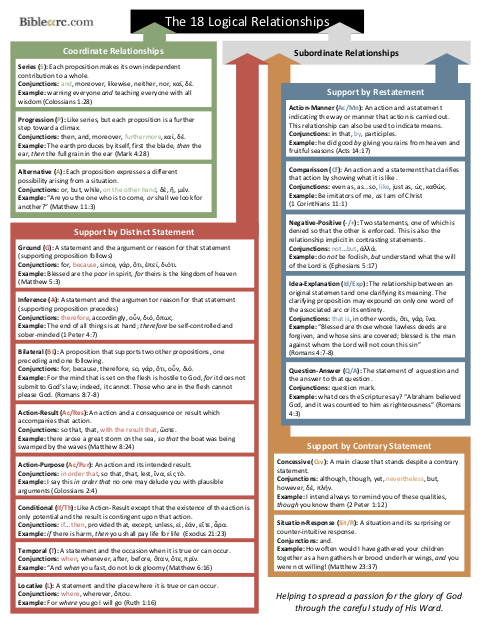Lesson 1 | What is Bracketing?
Divide and connect
The two steps
Step 1: Dividing the passage into propositions
The first step in Bracketing is to break up the passage into propositions. A proposition is a verbal idea—a simple thought. Later in the course we will break out our technical grammatical language and look at this step with precision, but for now we will rely on our intuition and the punctuation in the text.
For example, take John 1:1.
In the beginning was the Word, and the Word was with God, and the Word was God. He was in the beginning with God.
“In the beginning” is not a complete thought. We are given a time qualifier, but are not told an idea yet. On the other hand, “In the beginning was the Word, and the Word was with God, and the Word was God” is more than a single, simple thought. It contains three simple thoughts. But the second sentence of the verse does contain only a single, simple thought.
In the beginning was the Word, and the Word was with God, and the Word was God. He was in the beginning with God.
Thus, we can observe that some sentences will contain only a single proposition, while most will contain more than one. We can also note that punctuation gives us good hints. While it is not a foolproof rule, the following punctuation marks often indicate a proposition break, just as they do in the text above.

Step 2: Connecting the propositions with logical relationships
The second and more involved step in Bracketing is to connect the propositions back together. This is done at different levels of connections with different logical relationships. There are 18 logical relationships that are used in Bracketing.* To put it another way, there are 18 basic ways in which thoughts can relate to one another. And you will need to learn these logical relationships well as the “vocabulary” of Bracketing if you hope to master this Bible study method.
 The 18 Logical Relationshipspdf
The 18 Logical RelationshipspdfThis printable cheat sheet gives the category and definition of the 18 logical relationships in Bracketing. It also features common conjunctions and an example verse for each relationship.
In the next several lessons, we will examine the 18 logical relationships, one category at a time.
It is also important to understand that you will first be connecting simple thoughts of a passage together to make more complex thoughts. Those complex thoughts will subsequently need to be connected to other simple or complex thoughts, in the proper order, to rightly build out a logical interpretation of the text. This too will be illustrated in the coming lessons via an abundance of examples.
* Note: In the Discourse module (used for Bracketing), there is a display option allowing you to utilize “extended relationships.” Certain professors of Bracketing utilize this extended list and so we have made them available in the app. However, we do not use this extended list in our online courses.